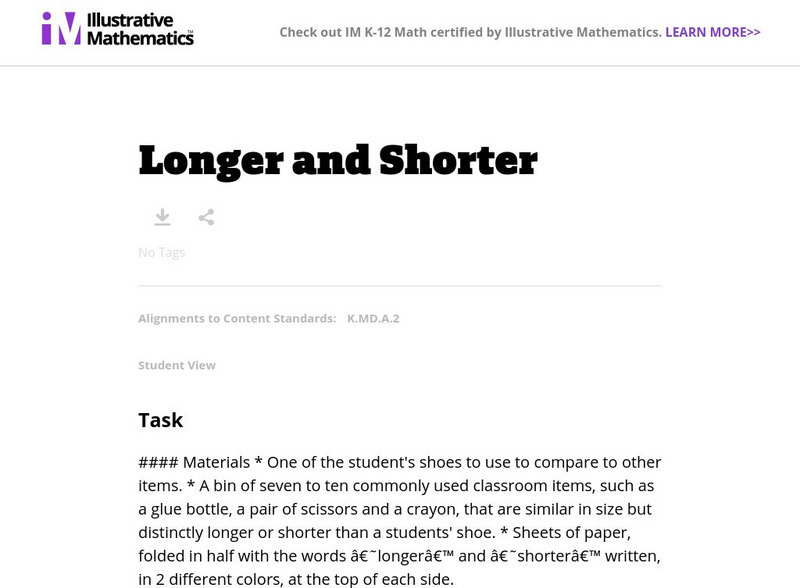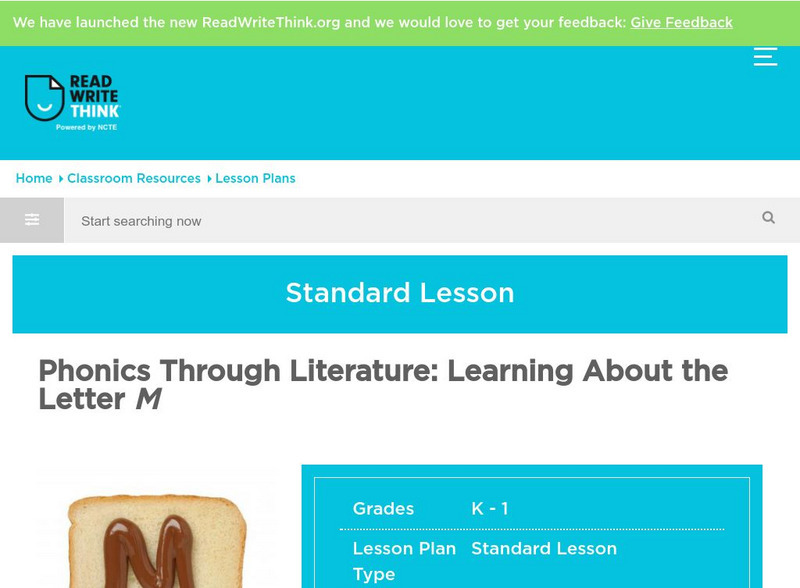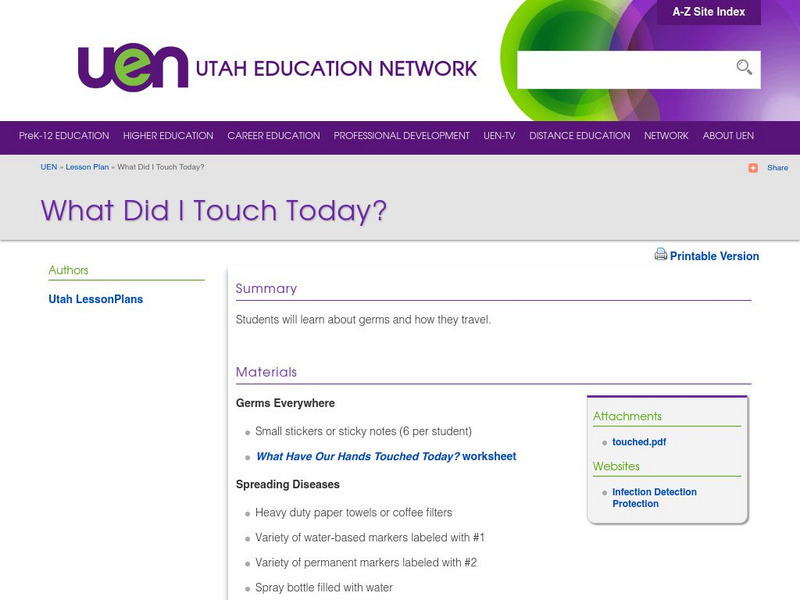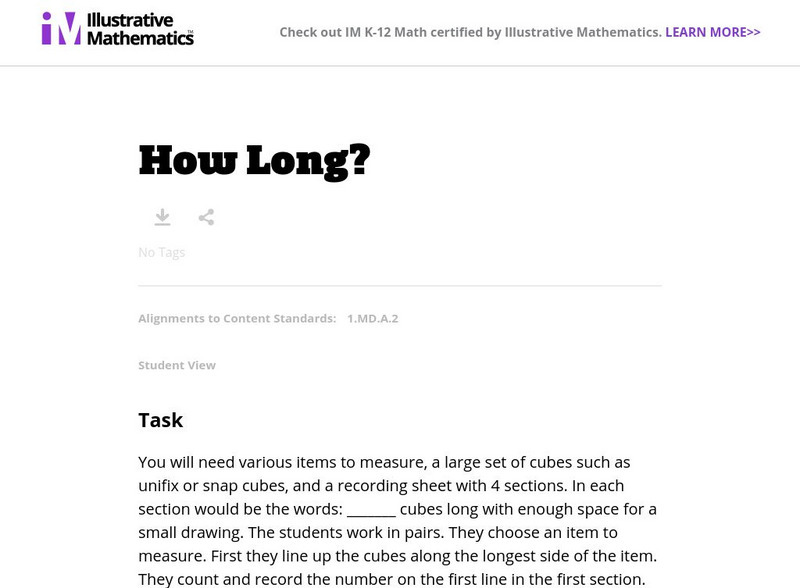Hi, what do you want to do?
New York State Education Department
TASC Transition Curriculum: Workshop 4
Why is it important to use precise language? Participants explore this question in the fourth activity in a series of 15 on effective instruction. Perfect for all content areas, the activity promotes appropriate language choice through...
National Geographic
National Geographic: Mapping the Classroom
Learning to use and create maps builds young scholars' spatial thinking skills as well as language skills in the early years. In this lesson, students practice using the language of location and then apply that language when creating a...
ReadWriteThink
Read Write Think: Have Journal Will Travel: Promoting Family Involvement in Litera
Students build positive memories of literacy activities when they take turns taking home a book bag stuffed with items to encourage literacy interactions with their families.
Illustrative Mathematics
Illustrative Mathematics: Longer and Shorter
Students will use their shoe as a measuring item to learn about length. Students will compare classroom items by holding their shoe against the item and deciding if it is longer or shorter than their shoe. Students will record their...
Better Lesson
Better Lesson: Finding Angles
The three types of angles, right, acute, and obtuse, exist in our everyday surroundings. Students find these angles using classroom items.
Utah Education Network
Uen: Design Your Own Bedroom
Many students dream of designing their ideal bedroom. For this exercise, students will be required to limit their designs by size (as a specific volume) and price (a specific amount). They must design the floor plan, including furniture...
ReadWriteThink
Read Write Think: Phonics Through Literature Learning About the Letter M
Contains plans for lessons that teach about the letter M using a "Mystery Box" filled with items starting with M and the books "Five Little Monkeys Jumping on the Bed" and "Five Little Monkeys Sitting in a Tree" by Eileen Christelow. In...
ReadWriteThink
Read Write Think: Lesson Plan: Environmental Print
This lesson introduces students to the concept of reading through common items from the community. Through examining these items (environmental print), students will practice their reading skills and begin to see themselves as competent...
Utah Education Network
Uen: What Did I Touch Today?
In this instructional activity, students will assess what items in the classroom are touched the most. Students will investigate germs and distinguish between communicable and noncommunicable diseases.
The Dirksen Congressional Center
Congress Link: Lesson Plans
The Dirksen Congressional Center provides abundant lesson plans on all aspects of the US Congress and the US Constitution. All lessons contain time frames, objectives, and links to material, and are built around Bloom's taxonomy.
Alabama Learning Exchange
Alex: Spotting Sounds All Around
This is both a hands-on and technology based lesson where students can apply their knowledge of letter/sound relationships while incorporating the use of classroom technology. This Language Arts activity will allow for the students to...
Illustrative Mathematics
Illustrative Mathematics: How Long?
Students will investigate the attribute of length by using a common measurement tool such as snap or unifix cubes to directly measure objects in the classroom. Materials needed include various items to measure, a large set of cubes such...
Better Lesson
Better Lesson: Quadrilateral or Parallelogram?
Third graders discover the differences between quadrilaterals and parallelograms with everyday items found in the classroom.
ArtsNow
Arts Now Learning: Dramatic Living and Non Living [Pdf]
Students explore the differences between living and nonliving things through the lens of the nursery rhyme, "Hey Diddle Diddle." After bringing the characters to life, the students discuss the concepts of living and nonliving and act out...
Other popular searches
- Measurement Classroom Items
- Spanish Classroom Items
- Pictures of Classroom Items
- Teach Classroom Items
- Esl Lessons Classroom Items
- Classroom Items Answers
- Classroom Items Lesson Plans
- Measuring Classroom Items















